Carter County Native American Research Material
Contributed by Matthew Maley
Artifacts from a Carter Caves Area Campsite
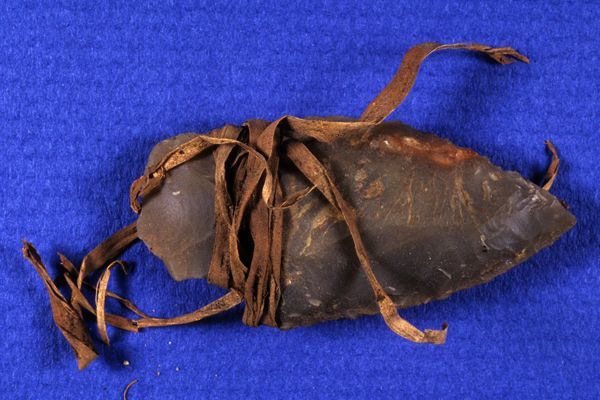
This an unused Adena ovate base point wrapped with blue stem grass - found just like you see.
This artifact is now at OSU.

Bone perforators found by the owner of the shelter site
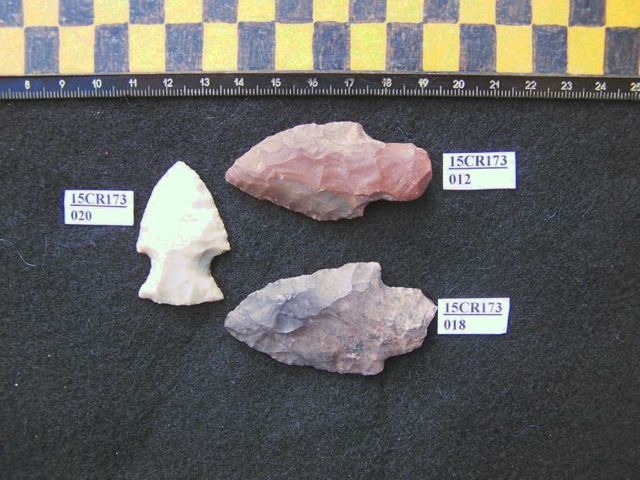
#20 is from around 300 AD and the other two are Adena and may be in the 600 - 700 BC age period based on other
dates obtained from objects at the site. These items are to be kept at the Webb Museum at UK. #018 had been burned.
"Here are some photos from 15CR173 -the shelter with the preserved plant remains.
The slipper was dated at 638 BC +/- 60 years. It is currently at the Webb Museum at UK. The second photo is the site."
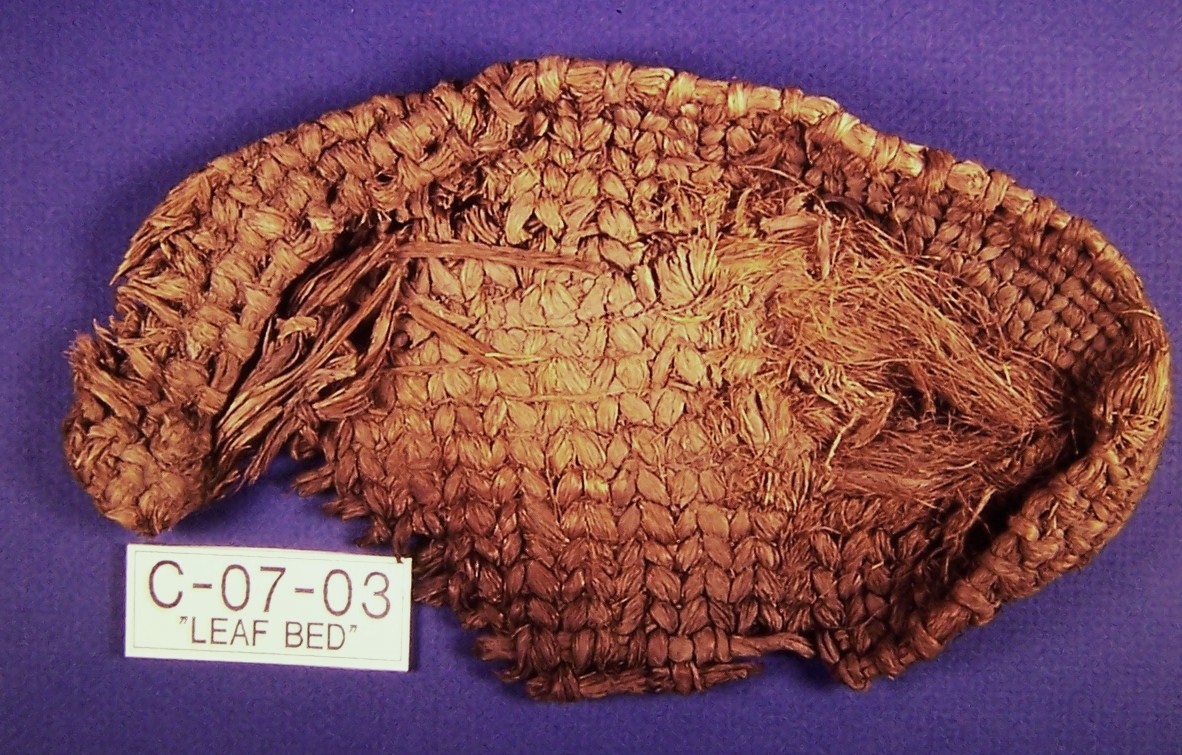
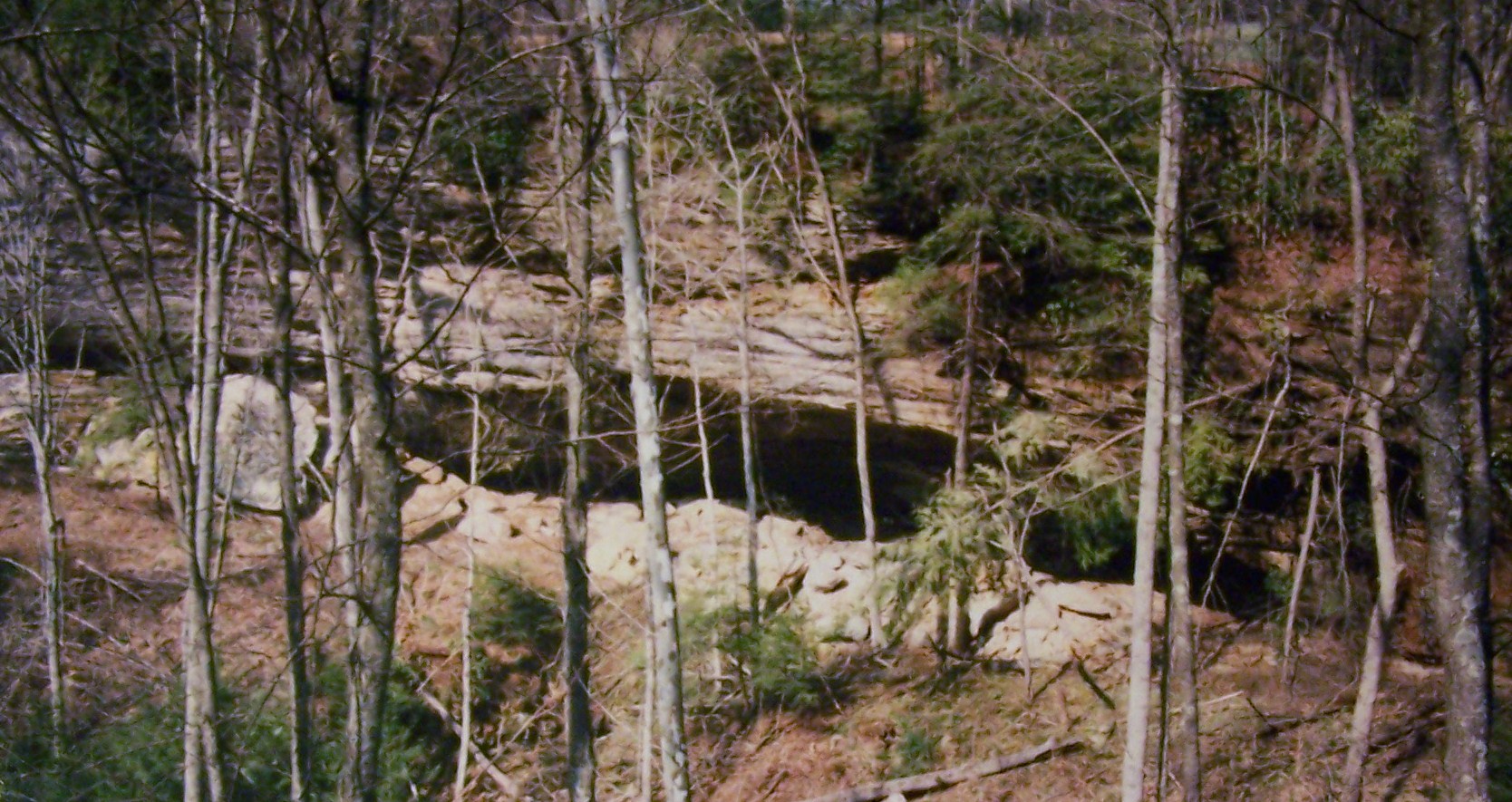
NATIVE AMERICAN USE OF NATURAL MATERIALS
"Ethnobotanical Uses of Plants" by Matthew Maley. Very interesting.
NOTE: “Medicinal uses are suggested by literature but may be useless or dangerous.
Do not use these suggested remedies unless proven to be effective and SAFE.
"This list was prepared for Bib Bone Lick, KY. We conduct an annual walk (at Carter Caves State Park) to review plants that were used by Native Peoples.
Also, this document included other information specifically related to Big Bone Lick."
Andropogon sp. [Bluestem-grass] Utility: Baskets, matting, base material for roofing, “historic reference of use of the
stems of seed stocks as knitting needles”
Medicinal: historic reference to use of lower grass blades as tea for fever
Arundinaria gigantea. [Cane] Utility: Baskets, matting, arrow shafts, structural elements, fish traps. Bundles of
cane stems found as torches in Salts and Mammoth Caves.
Food: Spring shoots.
Medicinal: historic reference that root used as diuretic
Salix sp. [Willow]
Utility: Thin branches for baskets, matting, fish traps, parts of structure walls (waddle &dab).
Bark of branches for woven objects and cordage.
Medicinal: Contains “salacin” an aspirin like substance: Bark chewed for headache, also,
used topically for pain.
Typha latifolia. [Cattail]
Utility: Leaves for woven items, matting & baskets. Ripe seed heads for padding and as a diaper.
{in 1900’s used to fill water tight bags to provide flotation – life jacket}
May serve as a “fire starter” for bow drill or flint/steel.
Food: Basically all parts are edible. Leaves as a green in spring. Root is source of starch.
Pollen from seed heads, in spring, used like flour.
Quercus sp. [White Oaks] Q.alba (White Oak) , Q.macrocarpa (Bur Oak), others
Utility: Wood for structures, tools, firewood. Bark of some Oaks used for dye.
Oak galls of some Oaks used for dye. Wood “splits” for matting.
Food: Acorns boiled and ground to make meal or flour. [Must boil to remove bitter
tannins to produce edible “nut”.]
Juglans nigra. [Black Walnut] [J.cinerea Butternut Walnut – rare]
Utility: Wood for fuel, tools, other. Bark, roots, & and nut husk for brown or black dye.
Food: Nut provides very good source of food and can be stored for long periods.
Medicinal: Contains “Juglone”: Husk juice topically for fungal infection (ringworm),
poultice for inflammations. Inner bark tea for emetic & laxative. Bark chewed
for toothache. Leaves to rid bedding of bugs.
Rubus fructicosus. [Blackberry]Utility: Root has produced an orange dye.
Food: Berry is a good source of Vit. C and a good food source.
Medicinal: Leaves (tea)—astringent, tonic, diuretic and externally for ulcers.
Impatiens capensis and I. bicolor. [Jewelweed, Touch-me-not]
Utility: Leaves produce a yellow or orange dye.
Medicinal: The juice will prevent poison ivy if applied shortly after contact with poison ivy.
Prunus serotina. [Wild Black Cherry]
Utility: Wood may have multiple uses. Tree sap was used in some cases like a glue.
Berry produces a stain and possible dye. Seed used for jewelry.
Food: Berry is edible (not the seed).{
NOTE: Leaves, bark, inside of seed contains a cyanide compound = POISON}P.2Ulmus sp. [Slippery Elm U. rubra; American Elm U. americana]
Utility: Stem bark for cordage, rope, binding, woven objects, baskets, sandles, matting. Food: Sap of inner bark has some food value *Medicinal: Sap* was used as a laxative, also, reported to have topical applicationsUrtica gracilis. [Stinging nettle]Utility: Fiber for thread, cordage, yarn, woven objects, bindings, and fabric.Food: Spring shoots after being boiled.Medicinal: Counter irritant (probably not a good idea….)Saline Water [Mineral spring]Utility: Source of salt. Evaporation of about 4 ounces of water produced about a gram of
salt (sodium chloride). {In the past, sulfur could be seen floating on the surface
of the water as the result of the action of a bacteria (inorganatroph) that use the
hydrogen sulfide as an energy source and produce sulfur as a by-product.}
Food: Salt (sodium chloride) is essential and many animals and man came to the spring
to obtain the salt. Medicinal: Some people may drink the sulfur containing waters of such springs but there
are several potential risks including bacterial contamination and possible toxic
chemicals. Boiling the water to produce salt is a safe method.
“High Fluvial Deposits” {Gravely material deposited by an ancient north flowing river}
Utility: The “High Fluvial” deposits contain a variety of quartz containing rocks, including
CHERT (commonly called flint), geodes, quartzite, sandstone, and quartz.
Native People used the chert to make a variety of stone (lithic)
tools. For this reason we refer to this time period as a “stone age”. However,
we must not underestimate the tremendous skill that these people had to use
stone as we use metals today. They made scrapers, knives, saws, and a variety
of “projectile points” (frequently erroneously called “arrow heads”). They
could take a piece of stone and turn it into a variety of useful tools to help them
survive. Deposits of this stone may be found in the Big Bone Creek.
Laportea canadensis. [Wood Nettle]Utility: Fiber was used for thread, cordage, string, binding material, for weaving, fish nets,
yarn, and fabric.Food: Cooked green in the spring.
Boehmeria cylindrica.
[Stingless Nettle]Utility: Fiber used for cordage, string, weaving, footwear, bags, and bindings. Fibers
are quite strong when obtained at the correct time and properly processed.
Asimina triloba. {Pawpaw]
Utility: Bark of twigs and saplings may be used to produce rope, cordage, and bindings.
Food: Fruit is edible and sweet in the fall.
Medicine: Ground seeds used for lice control. Leaves indicated to have “insecticidal”
properties. Leaves used to “stun fish” in a confined area. [Note: like many
“wild” foods, too much of the fruit may have a laxative effect]
Liriodendron tulipifera. [Tulip Tree]Utility: A very ancient tree. Inner bark used for its fiber to make cordage and bindings.P.3Gl
editsa triacanthos. [Honey Locust]Utility: Thorns were used as pins and perforators. Putting a small hole in the end of
a thorn will permit it’s use as a needle.Food: Some have suggested that the inner pulp of the seed pod is edible, however,
like the black locust (Robinia pseudo-acacia) parts of this plant are potentially toxic.
Celtis occidentalis. [Hackberry]
Food: Berry, in the fall, is sweet. There is not much pulp, but they are a tasty snack.
Juniperus virginiana. [Red Cedar – Juniper]
Utility: Bark used for baskets, padding, rope, cord, and bindings. A dye may be
obtained from the berries. Wood will repel moths.
Food: Berry used a flavoring.Medicinal: Extract of berry reported to have “antiseptic” properties and good for cough.
Vitis sp. [Wild Grape]Utility: Vine may be used for some binding, building elements, baskets, fish traps, and
like a “clothes line”.
Food: The grape is edible but sour. In the spring, a clean, sweet water can be obtained
from the vine.
Asclepias incarnata. [Swamp Milkweed]Utility: Fiber for cordage, yarn, thread, weaving, binding, and fabric. A very soft fiber
can be obtained when the stem is properly processed.
Apocynum cannabium. [Dogbane]
Utility: Fiber used for cordage, nets, bow strings, bindings, woven items, yarn, and fabric.[
Plant parts are poisonous so any reported “medicinal use” may be dangerous]
Bison bison. [Buffalo]Utility: Hair spun and woven into many items. Hides made shelters, garments, shoes, and
ropes and binding material. Also, bags and other containers could be made.
Bones were used for many purposes including making a variety of tools. The
Native People used every part of the animal – nothing went to waste.
Food: The meat of the Buffalo is low in fat but very much like beef.
Many more plants have potential uses and these are simply a representation of some of the plants that were used by the people who first visited
and lived in Kentucky and at Big Bone Lick.This plant list is specific to the Big Bone Creek walking trail (blacktop).
Matt Maley
April 2003
PLANTS HAVING POTENTIAL ETHNOBOTANICAL USE
BEDSTRAW (Galium aparine): Young shoots boiled as a green. Seed roasted as coffee substitute.
Folk: Leaf tea as diuretic, kidney stones, scurvy
BEECH (AMERICAN) (Fagus grandifolia ): Seed/Nut – roasted and eaten whole or ground as flour.
Roasted kernels as coffee substitute. Pressed kernels produce good vegetable oil.
CHICKWEED (Stellaria sp.): Cooked green
COLTSFOOT (Tussilago farfara) Leaf- boiled with sugar to make cough syrup, tea.
Burned leaf ash used as a seasoning like salt
NA: Leaf/flower- for sore throat, cough, asthma
Research suggests that leaf mucilage sooths inflamed mucous membranes.
Note: Contains Pyrrolizidine alkaloids which may be toxic
GREENBRIER: Young shoots cooked like asparagus, like spinach or fresh
Root: processed for thickener
HEPATICA, SHARP LOBE (Hepatica acutiloba): NA: Liver ailments, laxative
Fold remedy: Fever, liver ailments, cough
Note: Contains irritating chemicals like others in Buttercup family
JAPANESE KNOTWEED: Shoots to 1 ft. boiled like asparagus. Older stems pealed and boiled w/pectin to
make rhubarb like jelly
MAYAPPLE: Fruit – when yellow/ripe is edible (limit number)
NA: root= as purgative, emetic, worm expellant. For herpes, influenza, small pox
Note: Contains Podophyllotoxin – anticancer, antimalarial
TOXIC: Small amount of root or leaf may be hazardous
ROCK TRIPE: Boiled 60 minutes – used as cooked vegetable or added to soup
RUE ANEMONE (Anemonella thalictoides): NA: Root for Diarrhea & vomiting.
Physicians used experimentally/topically to treat hemorrhoids.
Note: May be toxic
SPRING BEAUTY: Root- like potato (best cooked)
SPRING CRESS: Leaf-salad condiment. Root used like horseradish
Folk remedy: root-toothache
NA: Root for colds, sore throat. Poultice for headache
TRILLIUM SESSILE: Leaves-in salad or boiled as a green
TRILLIUM (other sp.): Leaves – early before flowers develop used as a green
TROUT LILY (Erythronium americanum): Leaves cooked as a green. Bulb cooked
NA: Root for fever. Poultice for ulcers, relieve swelling
Note: May be slightly emetic. Leaf extract active against many bacteria
TWINLEAF (Jeffersonia diphylla): NA: root- cramps, spasms, diarrhea, infection, gargle
Externally- for rheumatism, sores, ulcers
Note: Indicated as TOXIC
VIOLET: Leaf-as a fresh green (note: root and leaf may be emetic). Thickening like okra
WILD GINGER: Root – substitute for ginger. Root boiled w/sugar and candied
NA: Root- indigestion, coughs, colds, fever, gas
Note: Contains aristolchic acid which has anti-tumor properties, however, it is considered toxic
and may induce cell mutations
WILD HYACINTH: (Camassia scilloides) Bulb – baked
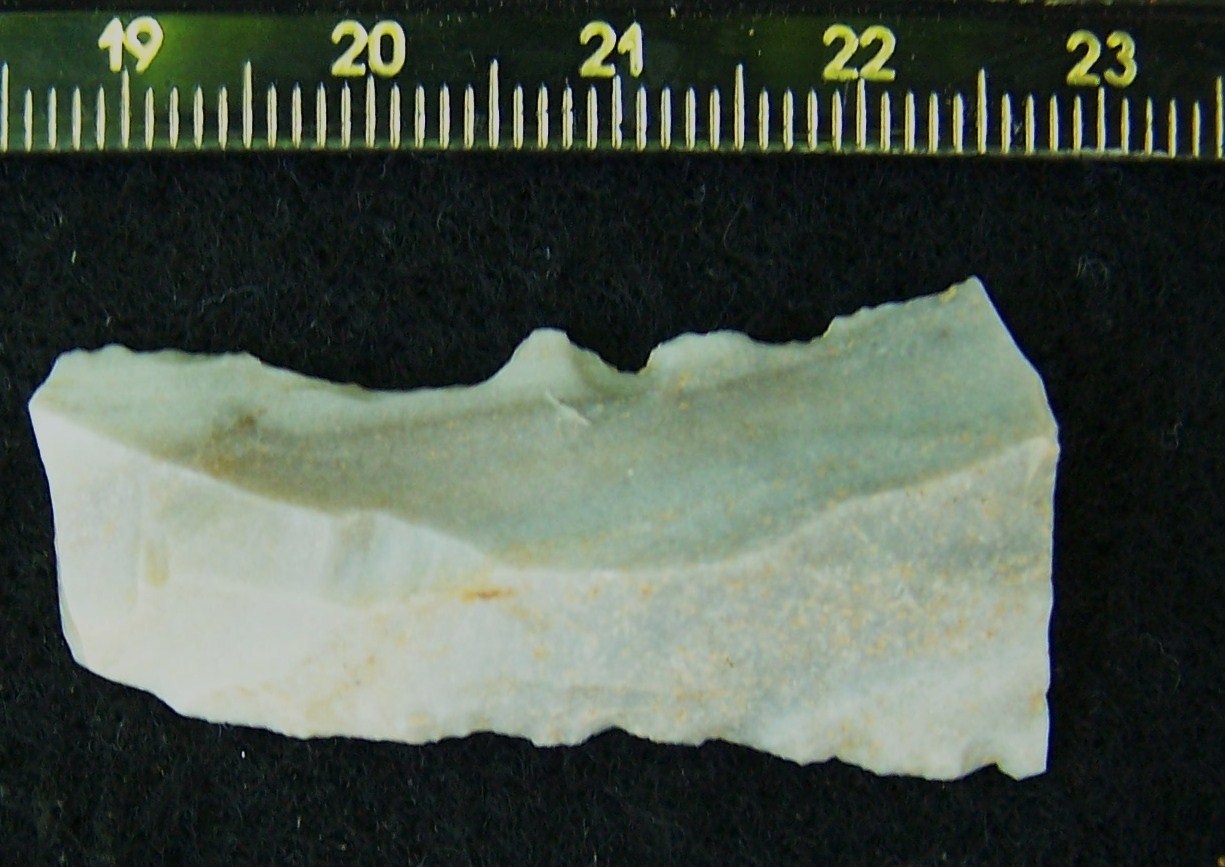
"This is a photo of a flake-scraper (broken) found at 15BE481 in Boone Co. KY. This stone is both microscopically and macroscopically the same as
chert from a specific quarry site in central Carter Co. This Boone Co. site is just a short distance from Big Bone Lick where Native People
from all over the area came to obtain salt. Within about 3 miles of Big Bone Lick a Paleo Period "lamace" (special scraper) was found at 15BE129
and it too matches chert that came from the Carter (Carter City) area. Several authors have commented on locating "Carter County" chert in sites
all along the Ohio River. I have been able to track Carter Co. chert to Maysville and to 20 miles up stream from Portsmouth, OH on the Ohio River.
At the junction of the Tygarts Cr. with the Ohio River,there are thousands of flakes and chunks of chert that came from the interior of Carter Co."
Matthew Maley, May 23, 2012
The first photo is the red ocher drawing photographed in Feb. 2010. Note how lichen and algae is overtaking the drawing - the gray/black is the algae.
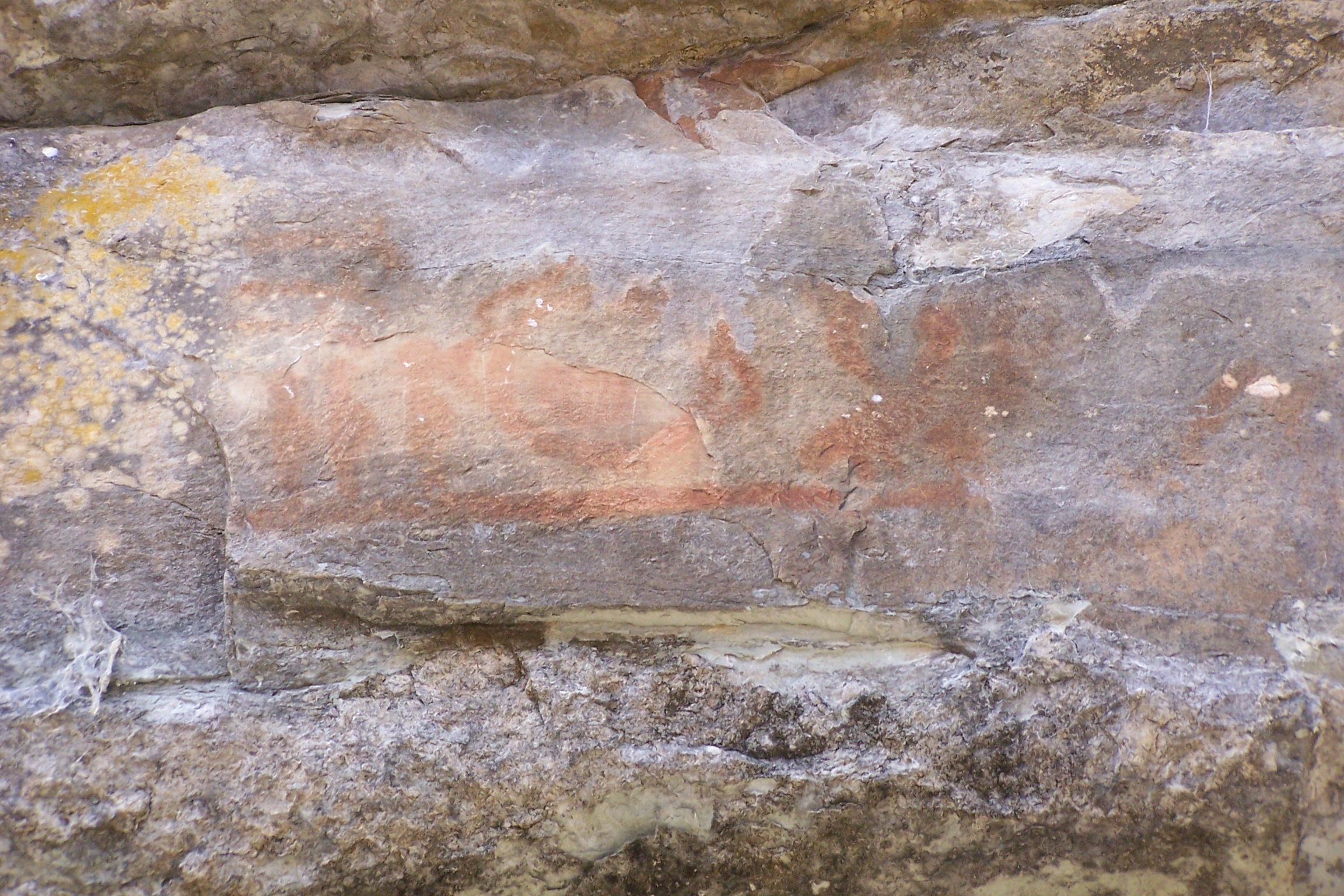
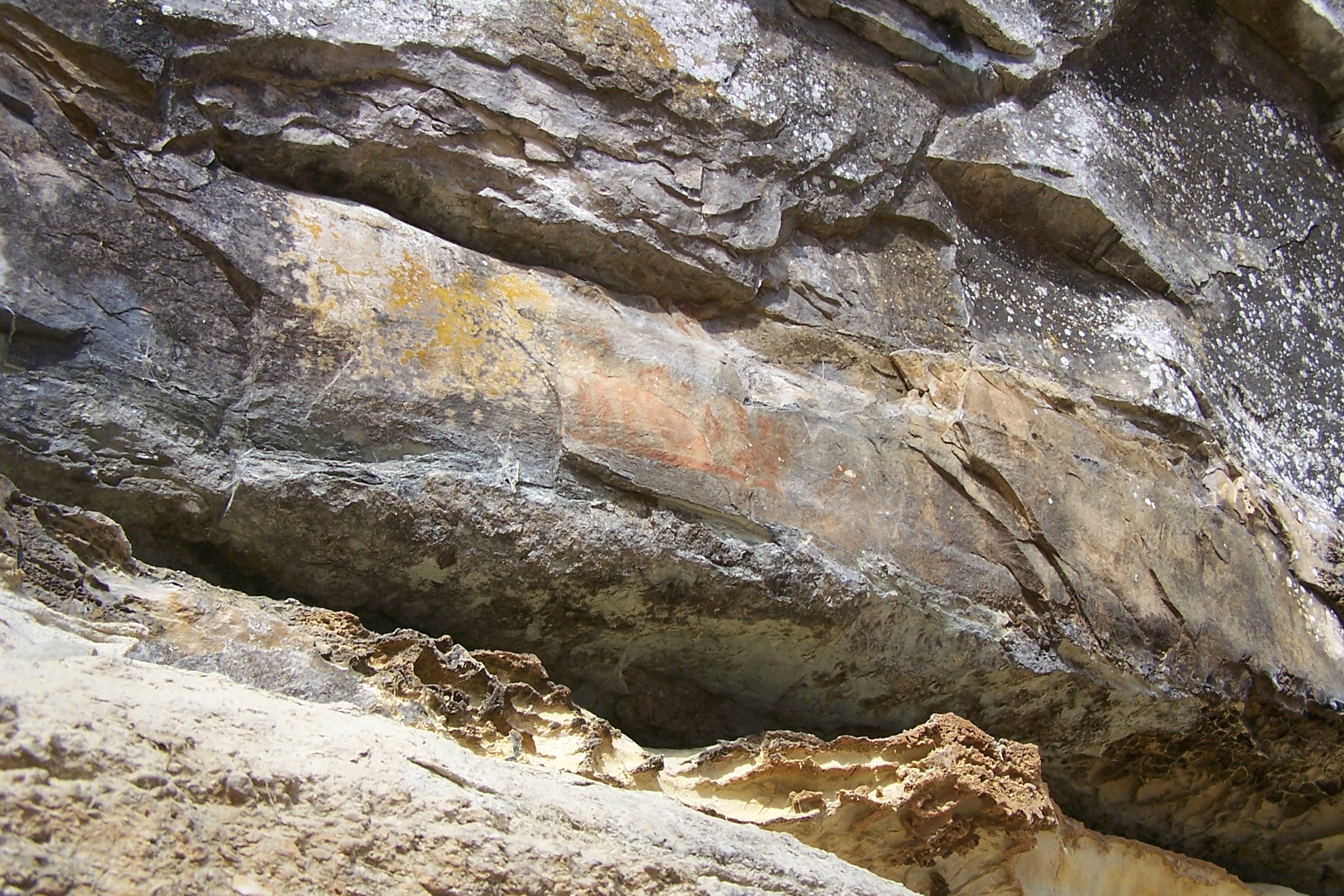
"The undulating circle with the circle and dot in it is a representation of the sun. To the left are three "figures" and just above them
are three "long guns". To the right of the sun symbol there is the remains of a deer or elk head and antlers. This is a historic drawing
probably Shawnee and we think it relates to a hunting activity and possibly marks the location of the crystal form of salt (large deposit).
There are seven 8-10 cm red ocher "dots" to the left of the drawing (can't see in this photo) and three "stick figure" animal drawings about
a meter to the right of this drawing."
About 20 meters or so to the left of this drawing is another sun symbol that is pre-historic in origin.
It was scratched into the black surface rock and then lichen filled in the scratched off area to provide a gray color to the symbol.
It, however, is almost completely covered by lichen. The lichen destroys the drawings while algae can be washed off with a weak solution of bleach. I have tested this on a small area of one of the red dots and it was very satisfactory in bring that part of the dot back to a point where it could be easily seen.
The red color is due to red ocher. However, the artist mixed the ocher with possibly a plant latex or other plant sap.
I have experimented with milkweed latex and red ocher to see how long a drawing would survive. The combination allowed a drawing that was
exposed to Cincinnati weather conditions to last about 5 weeks. Without the latex it was gone after the first rain. A review of the
literature suggests that a combination of animal fat, plant latex and/or saps would prolong life of a drawing.
These drawings are fairly well protected but water that is now flowing down the cliff face carries the algae and that is covering the
surface of the drawings. One of the red ocher "dots" is located under a small ledge of rock and it is not damaged by the algae or lichen.
It is protected by that small protruding ledge. Thus, cleaning the drawings and then putting a small "roof" above them would potentially
preserve them for a few more years."
Matthew Maley
Photos of the midden and site at 15CR100 - Late Woodland Village (A.D. 400 - A.D. 1000) site.
The first photo us if the whole site. The dark area is the midden where the houses were located.
There is a clear area in the middle (the plaza). The black area contained a variety of artifacts associated with the lives of the people
who lived there. The second photo is a closer view of the midden.
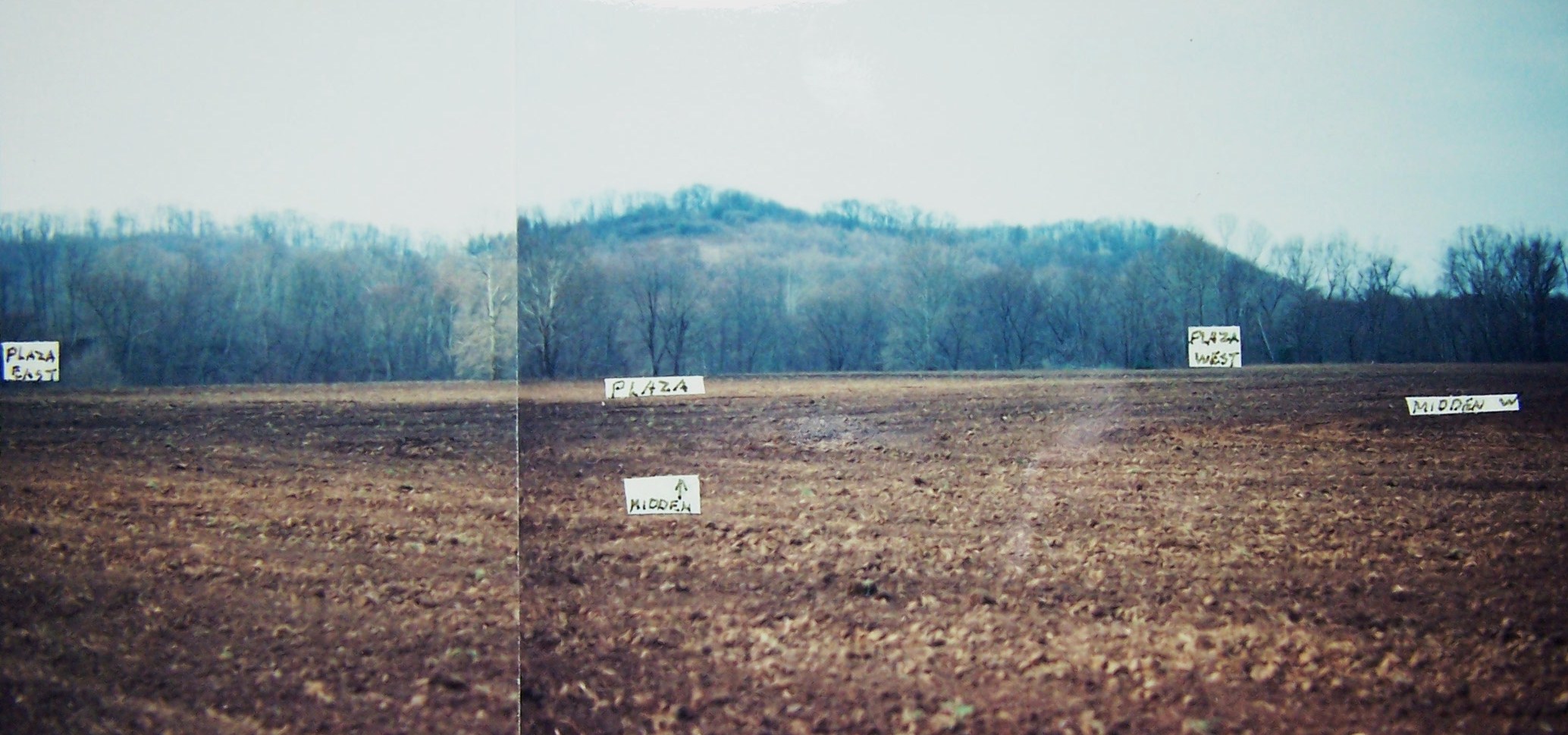

Return to main Carter County page







